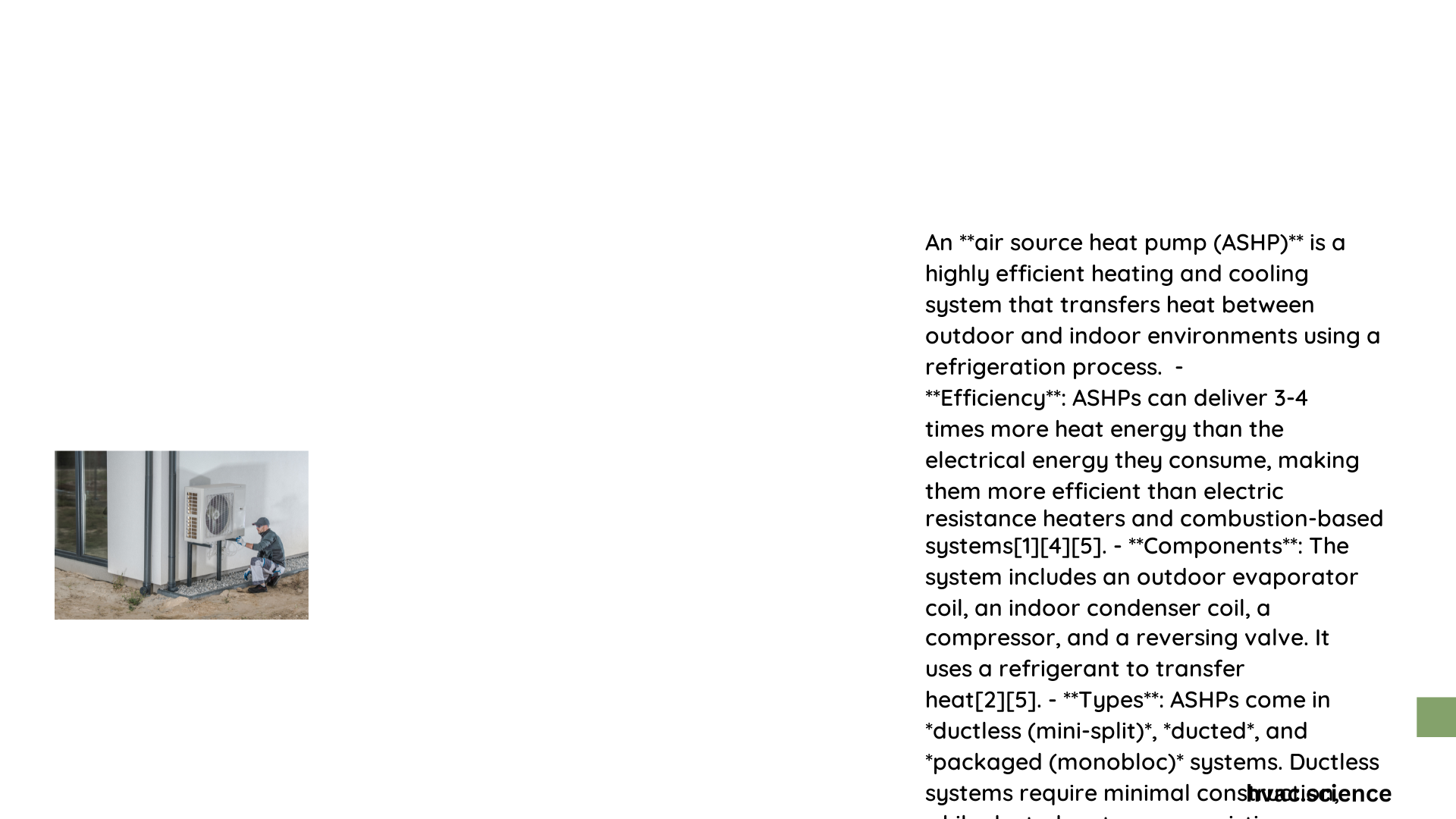Air source heat pumps represent a revolutionary approach to home heating and cooling, offering an energy-efficient alternative to traditional HVAC systems. These innovative devices transfer heat between indoor and outdoor environments, providing versatile temperature control while significantly reducing energy consumption and carbon footprint. By leveraging advanced thermodynamic principles, air source heat pumps can extract warmth from outside air even in cold temperatures, making them a compelling solution for modern, eco-conscious homeowners.
What Makes Air Source Heat Pumps Unique?
Air source heat pumps distinguish themselves through remarkable energy transfer capabilities. Unlike conventional heating systems that generate heat, these devices move existing heat, making them inherently more efficient.
How Do Air Source Heat Pumps Work?
Air source heat pumps operate on a simple yet ingenious principle:
- Heat Extraction: External unit absorbs heat from outdoor air
- Refrigerant Circulation: Compressed refrigerant transfers thermal energy
- Indoor Heat Distribution: Warm air is circulated through home’s interior
| Component | Function | Efficiency Impact |
|---|---|---|
| Compressor | Pressurizes Refrigerant | Directly influences COP |
| Evaporator | Absorbs External Heat | Determines initial energy transfer |
| Condenser | Releases Heat Indoors | Controls indoor temperature |
What Are the Key Performance Metrics?
Efficiency Ratings Explained
- HSPF (Heating Seasonal Performance Factor)
- Minimum rating: 8.5 for split systems
- High-efficiency models: 9.0 or higher
-
Indicates seasonal heating efficiency
-
COP (Coefficient of Performance)
- At 47°F: ≥ 3.40
- At 17°F: ≥ 2.25
- At 5°F: ≥ 1.75
What Temperature Ranges Can Air Source Heat Pumps Handle?
Air source heat pumps demonstrate remarkable adaptability:
– Operational range: -20°C to 40°C (-4°F to 104°F)
– Cold climate models maintain 70% nominal heating capacity at 5°F
What Installation Considerations Exist?
Critical Installation Parameters
- Clearance Requirements
- Minimum 1 meter from obstructions
-
0.5 meters above ground level
-
Electrical Specifications
- Typical voltage: Single-phase 230V AC
- Amperage varies by unit capacity
How Much Maintenance Do They Require?
Maintenance protocols include:
– Monthly filter inspections
– Annual refrigerant level checks
– Professional servicing every 12-18 months
– Estimated annual service cost: $300-$600
What Challenges Might Users Experience?
Performance challenges include:
– Efficiency reduction in extreme cold
– Potential higher upfront installation costs
– Dependency on electricity prices
– Periodic maintenance requirements
Conclusion: Are Air Source Heat Pumps Right for You?
Air source heat pumps offer an innovative, energy-efficient heating and cooling solution. While initial investments might seem substantial, long-term energy savings and environmental benefits make them an attractive option for forward-thinking homeowners.

